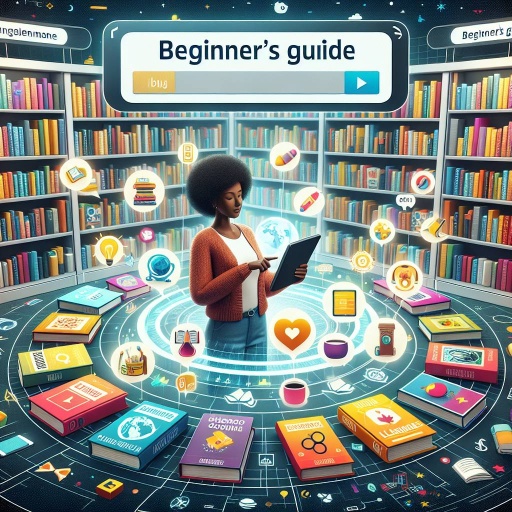E-books are more popular than ever, offering authors a chance to earn passive income while sharing their knowledge and creativity. If you’re a beginner curious about producing e-books, this guide will walk you through the key concepts, necessary tools, strategies, and potential pitfalls. Let’s dive in and discover how you can turn your ideas into a source of income!

Prerequisites
Understanding E-books
Before we get into the nuts and bolts, let’s define what an e-book is: an electronic version of a book that can be read on a computer, e-reader, or smartphone. They come in various formats such as EPUB, PDF, and MOBI.
Identifying Your Niche
To write your e-book successfully, start by identifying a niche or topic that interests you. This can be anything from cooking, fitness, personal finance, self-help, or even novels. The more passion you have for the topic, the better!
Tools Needed
E-book Formats
There are several formats for e-books, including PDF for general use, EPUB for most e-readers, and MOBI for Kindle devices. Understanding these formats is crucial for your distribution.
Self-Publishing Platforms
Platforms like Amazon Kindle Direct Publishing (KDP), Smashwords, and Lulu allow you to self-publish your e-book and reach a wide audience without traditional publishing constraints.
Royalties
When you sell your e-book, you’ll earn a royalty based on the price you set. Understanding how royalties work on different platforms is key to maximizing your passive income.
Marketing Strategies
Knowing how to market your e-book is vital. This can include social media promotion, email marketing, or using content marketing strategies like blogs or YouTube to drive traffic to your e-book.
Steps
Example: Choosing Your Niche
Suppose you love gardening and want to share your knowledge. You might choose to write an e-book about “10 Easy Herbs for Beginners”. This niche not only reflects your passion but also targets beginners who need guidance.
Example: Formatting Your E-book
If you choose to write a self-help book, you may draft your manuscript in Microsoft Word, then convert it to EPUB format using an online converter before uploading it to KDP.
Steps
Step 1: Choose Your Topic
Brainstorm ideas and select a topic you are passionate about and have expertise in.
Step 2: Write Your E-book
Draft your e-book, keeping it organized with headings and subheadings. Try using clear, engaging language to connect with your readers.
Step 3: Edit and Format
After writing, edit your work for clarity and layout. Tools like Grammarly can help with grammar checks. Use a proper e-book formatting tool (like Scrivener) to ensure it looks professional.
Step 4: Design a Cover
A compelling cover is crucial. Use platforms like Canva or hire a designer on Fiverr to create an eye-catching cover that reflects your book’s theme.
Step 5: Publish and Distribute
Choose a self-publishing platform, upload your e-book, and set your pricing. KDP is a good starting point for reaching a large audience.
Step 6: Market Your E-book
Use social media, blogs, and email to promote your e-book. Consider offering a free chapter as a lead magnet to attract readers.
Common Mistakes
Neglecting Editing
Skipping the editing process can lead to a poorly written e-book, which affects reviews and sales.
Ignoring Marketing
Many authors write their e-book but don’t market it effectively, missing out on potential sales.
Setting the Wrong Price
Pricing your e-book too high or too low can deter buyers. Research similar e-books to find a competitive price.
FAQs
Can I really make passive income with e-books?
Yes, once published, your e-book can generate income over time with minimal effort as it continues to sell.
Do I need to be a professional writer to write an e-book?
No, you just need to be knowledgeable about your topic and willing to write. Authenticity often attracts readers.
How do I get paid for e-book sales?
Payment methods depend on the platform you use. Most platforms offer monthly payments via bank transfer or PayPal.
Further Reading
The Ultimate Guide to Self-Publishing
A detailed guide on self-publishing your book, covering various aspects from writing to marketing.
Book Launch Checklist: Preparing for Success
A checklist to ensure you have all the necessary steps covered before launching your e-book.
Effective Marketing Strategies for E-books
Explore diverse marketing tactics to promote your e-book and reach a wider audience.
Conclusion
Creating and selling e-books can be a rewarding venture for those ready to invest time and energy into their writing and marketing efforts. With the right topic, tools, and strategies, you can establish a passive income stream that grows over time. Remember to continue learning from resources available to refine your craft and stay ahead in the ever-evolving e-book market. Happy writing!

